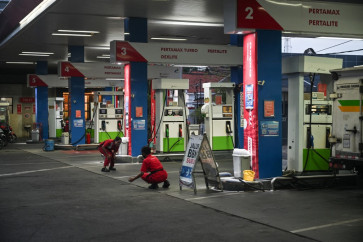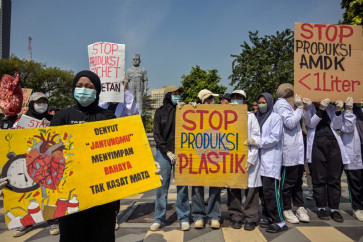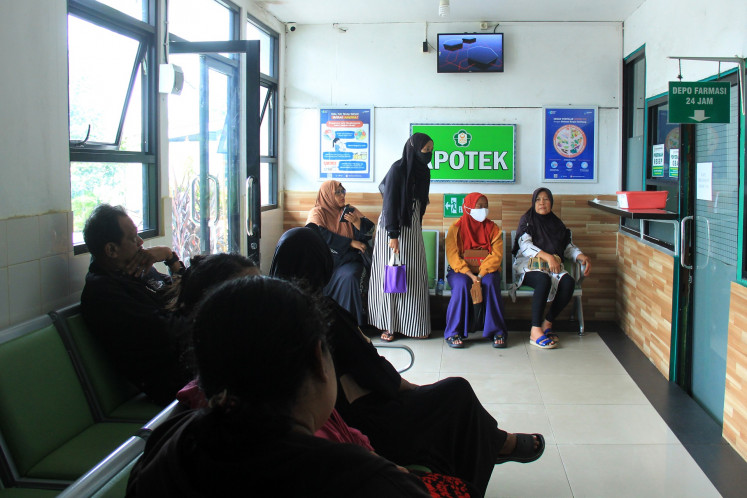Popular Reads
Top Results
Can't find what you're looking for?
View all search resultsPopular Reads
Top Results
Can't find what you're looking for?
View all search resultsIndonesia booked trade deficit in February: BPS
Change text size
Gift Premium Articles
to Anyone
T
he Central Statistics Agency (BPS) announced on Thursday that Indonesia booked a US$116 million trade deficit in February, bringing the deficit year-on-year (yoy) to $872 million.
Indonesia had enjoyed trade surpluses in the last three years.
Imports increased by 25.18 percent yoy to US$14.21 billion, while exports only increased by 11.76 percent yoy to $14.10 billion.
BPS chief Suhariyanto said all types of imports increased in February, with imports of consumer goods climbing by 55.32 percent yoy, driven mostly by rice imports.
Imports of industrial materials and capital goods, which made up over 90 percent of total imports, increased by 20.75 percent and 32.23 percent, respectively.
Meanwhile, export growth was held back by a 13.11 percent decline in palm oil exports, which may have been effected by India’s recent import duty hike on crude palm oil (CPO) imports.
India is the largest importer of Indonesia’s CPO, but in February the exports of the commodity decreased by 24.44 percent yoy to $113 million.
Suhariyanto expressed the hope that Indonesia would have an overall trade surplus by the end of the year, particularly if it could diversify its exports – not relying on the export of raw materials.
“We have to diversify our exports with more added-value products as otherwise, we risk being outpaced by countries like Cambodia and Myanmar,” he said. (kmt/bbn)










